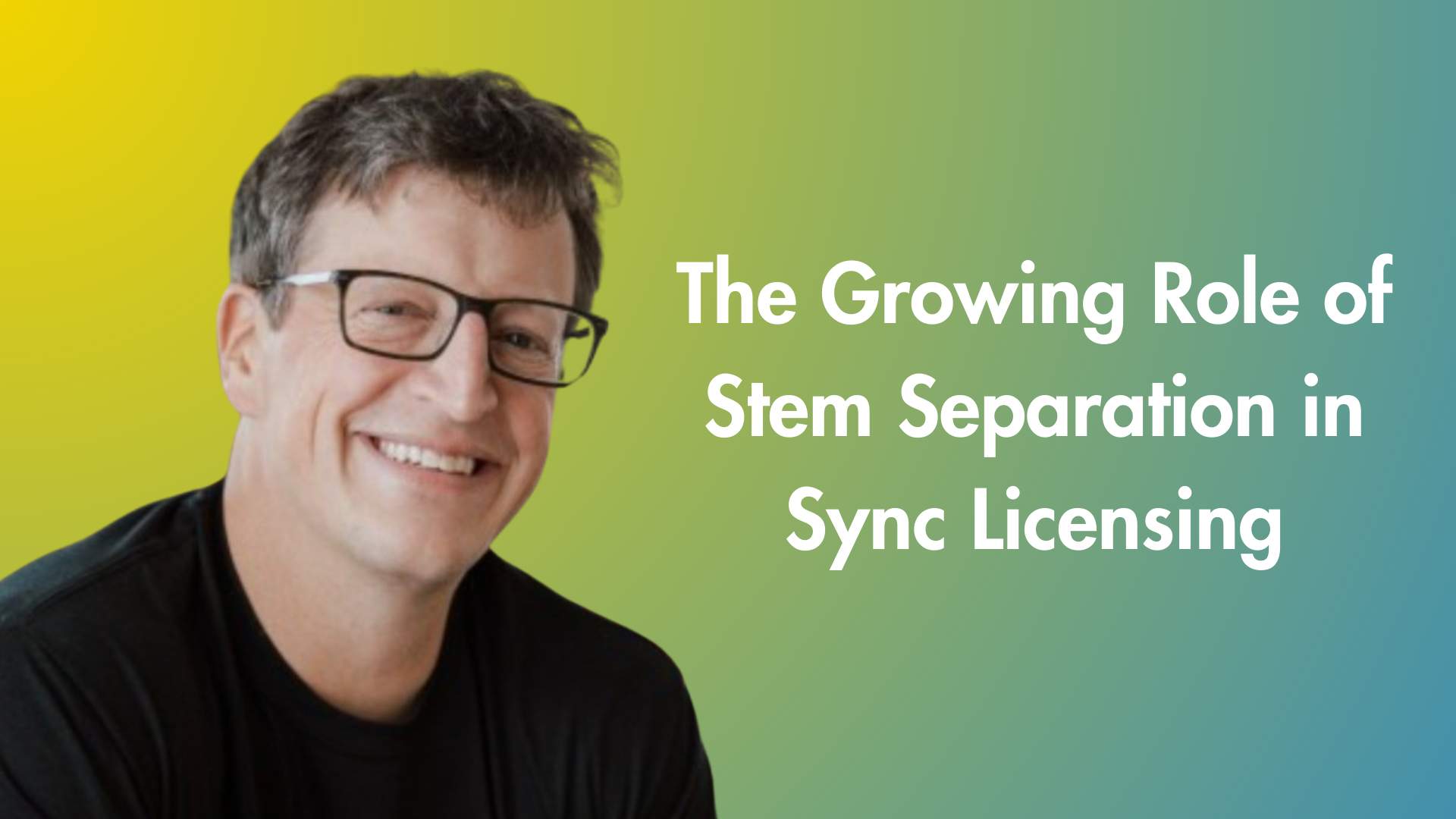By Matt Henninger, VP, Business Development and Sales, Music.AI
Flexibility and Control
As the worlds of music, marketing and brands continue to evolve, one technological advancement – stem separation – is making a significant impact, especially in the realm of sync licensing.
Stem separation technology allows us to isolate individual components – such as vocals, drums, bass, and other instruments – from a mixed track. For Music.AI, this capability started out as a useful benefit for artists and producers. But now we’re rapidly discovering a wealth of wider uses for this capability all the time.
Indeed, it is now transforming the way that brands approach crafting compelling soundtracks for visual media.
Stem separation provides an unprecedented level of flexibility and control, enabling sync professionals to tailor tracks to fit the specific emotional and narrative needs of films, commercials, television shows and digital marketing – all without requiring access to the original multi-track recordings.
One of our partners, Music Rightz, the sync music clearance, licensing, and supervision specialist, leverages stem separation to enhance its sync licensing opportunities. For instance, Music Rightz can use our tech to change the vocals to a track, to make them better align with the visual message.
New vocal lines to better match the ad
By using stem separation, Music Rightz is able to offer licensees of music far more flexibility in deploying a musical asset – which simultaneously provides the potential for artists to generate more revenue.
“The beauty of stem separation lies in its ability to provide new relevance and opportunity from legacy tracks, creating previously unexplored ways to generate revenue,” explains Suzanne Coffman, Senior Partner, Music Rightz. This flexibility not only satisfies the artistic demands of filmmakers and advertisers but also respects the integrity of the original music, offering a win-win for all parties involved.
Extending the usability of a song
Thanks to this capability, stem separation extends the usability of a song. Tracks that might not have been considered for sync licensing due to specific, unalterable elements can now be reimagined, opening up new revenue streams for artists and rights holders. It’s a testament to how technological innovation can drive both creative and commercial opportunities in the music industry.
As we look to the future, the possibilities that arise from stem separation are boundless. From creating immersive audio experiences that align perfectly with on-screen action to offering more adaptive and responsive music choices in real-time media environments, the potential is truly exciting.
Moreover, cinematic stem separation is poised to revolutionize how we interact with music in video assets. This advancement could potentially allow us to replace existing tracks entirely, providing a completely customizable audio landscape that can change dynamically with the visuals. Such capabilities hint at a future where music can be as adaptable and evolving as the fast-paced scenes of a thriller or the shifting tones of a documentary.
We are continually exploring these frontiers, helping to ensure that music not only meets the moment, but also enhances it.
A dynamic future for sync
Stem separation technology is not just about separating sounds—it’s about enabling music to more meaningfully connect with visual content. It represents a significant shift in how we think about music in sync licensing, promising a future where the soundtrack to every visual story can be as dynamic and tailored as the story itself.

